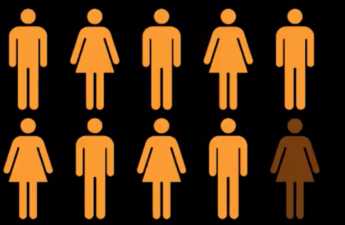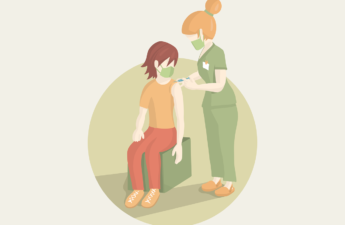
NEW ANALYSIS SHOWS PRONOUNCED RACIAL INEQUITIES AMONG COVID-19 CASES, HOSPITALIZATIONS AND DEATHS
Public Health Insider, Public Health – Seattle & King County
Public Health – Seattle & King County is releasing updated data on COVID-19 cases, hospitalizations and deaths by race and ethnicity. The updated data shows that in King County, COVID-19 is disproportionally impacting communities of color.
Hispanic/Latinx, Native Hawaiian/Pacific Islanders and Blacks had significantly higher rates of COVID-19 cases and hospitalizations as compared to Whites.
The rates were also higher among American Indian/Alaskan Natives (though not statistically significant due to small population numbers) and slightly lower among Asian populations as compared to Whites.
While the total number of deaths from COVID-19 is highest among Whites, the rate of death per 100,000 for Hispanic/Latinx and Native Hawaiian/Pacific Islanders is more than double that of Whites.
The updated analysis reinforces findings from other metropolitan areas and states across the United States. In King County, Public Health and community-facing task forces have been concerned since the beginning of this epidemic – that COVID-19 is exacerbating health inequities and is likely to take the biggest toll on communities already disadvantaged due to a long history of structural racism – ranging from housing policies to discrimination in health care, and more.

Key findings
Percent of cases by race/ethnicity shifting as the outbreak evolves: Over the past month, the proportion of COVID-19 cases among Whites has decreased, while the proportion of cases among communities of color has increased. This trend is consistent with the evolution from many cases initially associated with skilled nursing facilities to more transmission and cases in the larger community.
| Population | March 8, 2020 | April 26, 2020 |
| White | 72% | 50% |
| Hispanic/Latinx | 6% | 23% |
| Asian | 16% | 13% |
| Black | 5% | 10% |
| Native Hawaiian or Pacific Islander | 1% | 29% |
Geographic differences: A map of confirmed cases shows that while cases are found throughout the county, there are higher rates in south Seattle and south King County, and smaller concentrations in north King County and a pocket in northeast King County. The locations of higher rates of cases generally overlay with where there are larger concentrations of communities of color.
The map below shows equity score metrics by census tract. A higher equity score means less wealthy, more diverse.

When we compare the green map to the map that shows the rate of confirmed COVID-19 cases below, there is overlap between the census tracts with the highest equity score (less wealthy, more diverse) and census tracts with the highest case rates.

Reasons behind differences by race/ethnicity
Although there is more to learn about the impact of COVID-19 on Black, Indigenous/Native populations and communities of color, there is a lot we do know from data on health conditions and our communities’ experiences that provide explanations.
Underlying health conditions: People with underlying health conditions including heart disease, diabetes, lung disease and severe obesity are considered at higher risk for COVID-19. In the neighborhoods where many Black, Native and Indigenous people, and people of color live, there are less resources that contribute to positive health outcomes such as access to healthy, affordable foods and walkable neighborhoods. This leads to higher prevalence of chronic health conditions such as cardiovascular disease and diabetes, and severe obesity that place them at increased risk for severe COVID-19, and these disparities increase with age.
Living and working Conditions: More communities of color live in multi-generational households which can make it difficult to physically distance if a person is positive for COVID-19 and can lead to more infections among household members.
In addition, a disproportionate number of people of color are essential workers, such as working in grocery stores, restaurants offering delivery or take out, transportation, and cleaning and building services, making it possible to keep society functioning. Service workers aren’t generally able to telecommute and therefore have greater potential for exposure to COVID-19 than those who can stay at home during these difficult times.
On top of that, people who are undocumented are not able to access programs such as federal stimulus funds that allow them to more effectively physically distance and stay home, which may also put them at greater risk for exposure.
The Communities Count COVID-19 Vulnerable Communities Data Tool provides additional insights into communities in King County that may be more impacted by COVID-19.
“Race and place are major predictors of underlying health conditions and health outcomes. These systemic inequities play out profoundly with COVID-19 both in terms of who is getting infected and at greater risk for severe complications from COVID-19,” said Matías Valenzuela, Equity Director for Public – Seattle & King County.
“It is critical for us to do whatever we can to identify all health inequities associated with COVID-19 across our community,” said Dr. Jeff Duchin, Health Officer for Public Health – Seattle & King County. “This sobering analysis tells us we have serious work to do to with community partners to understand and address the causes of these disparities as quickly as possible.”
About the data
Additional data collected through interviews and record reviews for an increasing number of persons reported with COVID-19 infection has provided a more reliable picture of how cases, hospitalizations and deaths differ by race/ethnicity.
Even with this updated report, it’s important to remember that data is still limited requiring caution when interpreting these results for several reasons, including:
- Race and ethnicity are not reported for a significant number of cases (30%). The Washington State Board of Health is currently considering requiring race and ethnicity reporting for COVID-19 and other notifiable diseases, and Public Health – Seattle & King County along with King County elected leaders have requested that this requirement be enacted.
- There are small case numbers for certain outcomes like deaths and for certain racial/ethnic groups (for example among American Indian/Alaskan Natives).
- Broad racial reporting categories such as Black and Asian/Pacific Islander combine together distinct groups that may limit our ability to recognize differences in COVID-19 impacts that may be occurring by language, culture or country of origin.
- Not everyone in King County has equal access to testing and reported cases may not reflect the actual burden of disease in any racial or ethnic group.
- Different racial and ethnic groups may differ in access to healthcare or in healthcare seeking behavior which would in turn affect whether they would be diagnosed with COVID-19.
- Different analyses can help us learn more about different aspects of the outbreak. Both the overall analysis and the subgroup analysis (excluding the facility-associated cases) are needed to understand the true picture and impact of COVID-19 on our community.
Originally posted May 1, 2020


